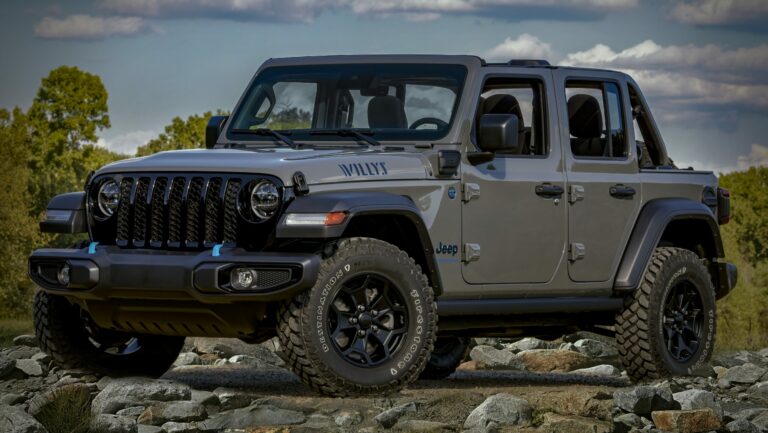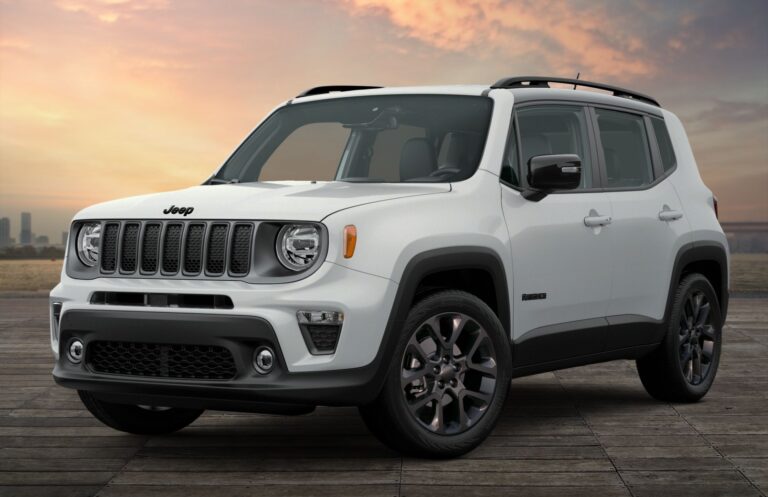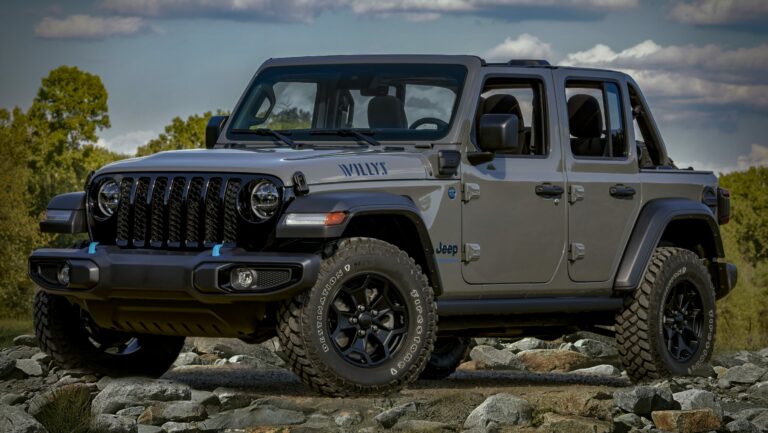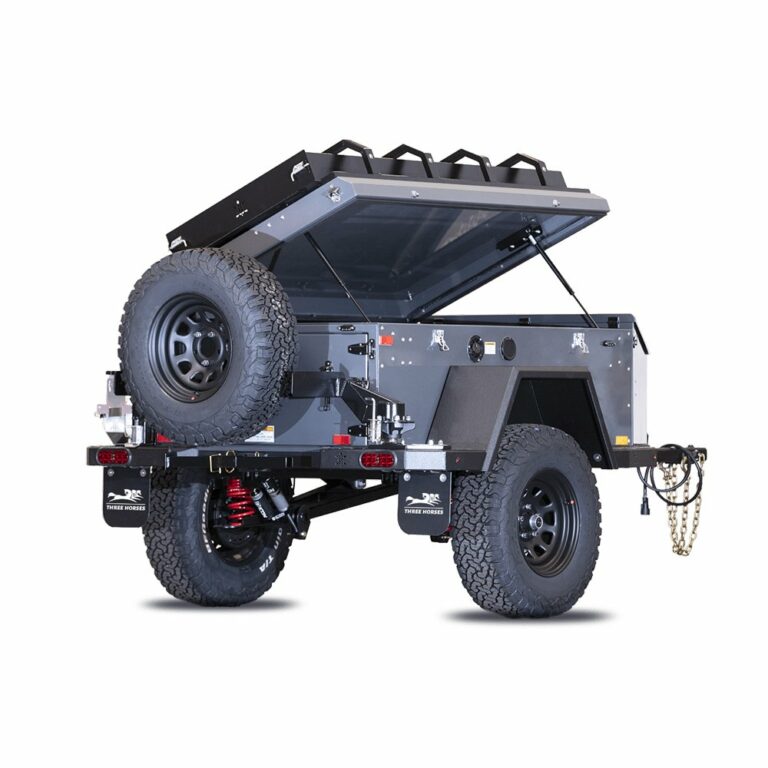How Much Is A Used 2013 Jeep Wrangler? Unlocking the Value of an Off-Road Icon
How Much Is A Used 2013 Jeep Wrangler? Unlocking the Value of an Off-Road Icon jeeps.truckstrend.com
The Jeep Wrangler isn’t just a vehicle; it’s a lifestyle, an emblem of adventure, and a testament to rugged capability. Among its celebrated generations, the 2013 model year holds a special place, representing a sweet spot for many enthusiasts and first-time buyers alike. This particular year falls within the JK generation (2007-2018), benefiting from the introduction of the significantly more powerful and fuel-efficient 3.6-liter Pentastar V6 engine in 2012, which addressed a common complaint about earlier JK models.
If you’re eyeing a used 2013 Jeep Wrangler, one of your primary questions will undoubtedly be: "How much does it cost?" The answer, however, is rarely a simple number. Instead, it’s a dynamic range influenced by a multitude of factors, from the specific trim level and condition to its history and location. This comprehensive guide will delve into these variables, providing a detailed breakdown to help you understand the true value of a used 2013 Jeep Wrangler and navigate the buying process with confidence.
How Much Is A Used 2013 Jeep Wrangler? Unlocking the Value of an Off-Road Icon
The Dynamics of Depreciation: Why Prices Vary So Wildly
Unlike many vehicles that plummet in value, the Jeep Wrangler holds its resale value remarkably well. This resilience is due to its enduring popularity, unique capabilities, and robust aftermarket support. However, even within this strong market, the price of a used 2013 Jeep Wrangler can fluctuate significantly. Understanding the core dynamics that drive these variations is crucial for an informed purchase.
Key Factors Influencing the Price
-
Trim Level and Configuration: The 2013 Wrangler was available in several distinct trim levels, each offering different features and capabilities, directly impacting its price:
- Sport: The base model, offering the quintessential Wrangler experience without many frills. It’s the most affordable option.
- Sahara: A more upscale trim with added creature comforts like body-color fender flares, upgraded wheels, power windows/locks, and often an improved interior. Commands a higher price than the Sport.
- Rubicon: The undisputed off-road king, equipped with heavy-duty Dana 44 axles, electronic locking differentials, a disconnecting front sway bar, and a lower transfer case gear ratio. This trim is designed for serious trail use and consistently fetches the highest prices.
- Special Editions: Throughout the JK generation, Jeep released various special editions (e.g., Arctic, Freedom, 10th Anniversary Rubicon). These often come with unique aesthetics, badges, and sometimes specific upgrades, which can make them more desirable and thus pricier.
- 2-Door vs. 4-Door (Unlimited): The 4-door Wrangler Unlimited, introduced in 2007, offers more practicality and passenger space, making it significantly more popular and, consequently, more expensive than its 2-door counterpart across all trim levels.


-
Mileage: This is one of the most straightforward indicators of wear and tear. A lower mileage 2013 Wrangler, especially one under 80,000 miles, will typically command a premium. Conversely, a vehicle with significantly higher mileage (e.g., over 150,000 miles) will be more affordable but may require more immediate maintenance.

Overall Condition (Interior, Exterior, Mechanical):
- Exterior: Look for rust (especially on the frame, hinges, and underbody), dents, scratches, and paint fading. A well-preserved exterior indicates a careful owner.
- Interior: Assess the condition of seats, carpets, dashboard, and controls. Tears, stains, and excessive wear can lower the price.
- Mechanical: This is paramount. A well-maintained engine, transmission, suspension, and 4WD system are critical. A vehicle with a clean bill of health from a pre-purchase inspection will justify a higher price.
-
Aftermarket Modifications: This is a double-edged sword for Wranglers.
- Value-Adding Mods: Professionally installed, high-quality lift kits, upgraded wheels and tires, heavy-duty bumpers, winches, and lighting can increase desirability and value, especially for off-road enthusiasts.
- Value-Detracting Mods: Poorly installed modifications, cheap parts, or extensive changes that compromise daily drivability can lower the price or make the vehicle harder to sell. Heavy modifications might also indicate a vehicle that has been used aggressively off-road.
-
Geographic Location: Prices can vary based on regional demand and factors like climate. Wranglers in areas with high demand for off-road vehicles (e.g., mountainous regions, desert states) might be pricier. Additionally, Wranglers from "rust belt" states might show more corrosion, potentially lowering their value.
-
Seller Type:
- Private Seller: Often offers the lowest prices as there’s less overhead and room for negotiation. However, sales are "as-is," with no warranty.
- Independent Used Car Dealership: Prices are typically higher than private sales due to reconditioning costs, profit margins, and sometimes limited warranties.
- Franchise Dealership (e.g., Jeep/Chrysler): Generally the highest prices, but often come with certified pre-owned (CPO) options, more thorough inspections, and better warranty coverage.
-
Vehicle History (Accidents, Title Status): A clean title (no accidents, no flood damage, etc.) is crucial. Vehicles with salvage, rebuilt, or flood titles will be significantly cheaper but carry inherent risks and can be difficult to insure or resell. A vehicle history report (like CarFax or AutoCheck) is essential.
Typical Price Ranges for a Used 2013 Jeep Wrangler
Based on the factors above, here’s a general breakdown of what you might expect to pay for a used 2013 Jeep Wrangler. These ranges are estimates and can fluctuate based on specific market conditions.
| Trim Level | Fair Condition (Higher Mileage, Minor Issues) | Good Condition (Average Mileage, Well-Maintained) | Excellent Condition (Low Mileage, Pristine) |
|---|---|---|---|
| Sport (2-Door) | $12,000 – $15,000 | $15,000 – $18,000 | $18,000 – $22,000+ |
| Sport (4-Door Unlimited) | $14,000 – $17,000 | $17,000 – $20,000 | $20,000 – $24,000+ |
| Sahara (2-Door) | $15,000 – $18,000 | $18,000 – $21,000 | $21,000 – $25,000+ |
| Sahara (4-Door Unlimited) | $17,000 – $20,000 | $20,000 – $24,000 | $24,000 – $28,000+ |
| Rubicon (2-Door) | $18,000 – $22,000 | $22,000 – $26,000 | $26,000 – $30,000+ |
| Rubicon (4-Door Unlimited) | $20,000 – $25,000 | $25,000 – $30,000 | $30,000 – $35,000+ |
| Special Editions | Varies, often $2,000-$5,000 higher than equivalent Rubicon or Sahara |
Note: These are estimated ranges as of late 2023/early 2024 and can fluctuate significantly based on specific mileage, options, aftermarket modifications, geographic location, and current market demand. Always check multiple sources and local listings.
Where to Find Your 2013 Jeep Wrangler
The search for a used Wrangler can be an adventure in itself.
- Online Marketplaces: Websites like AutoTrader, Cars.com, CarGurus, and TrueCar offer extensive listings from dealerships and private sellers. Facebook Marketplace and Craigslist are also popular for private sales, but require more caution.
- Dealerships: Both brand-specific (Jeep/Chrysler) and independent used car dealerships often have Wranglers in stock. Dealerships usually provide financing options and may offer limited warranties.
- Specialty Off-Road Shops: Some shops that specialize in Jeep modifications and sales might have used Wranglers that are already modified, often by enthusiasts.
- Auctions: Public and dealer auctions can offer lower prices, but they are generally for experienced buyers who can assess vehicles quickly and without a test drive.
Practical Advice for Buying a Used 2013 Jeep Wrangler
- Define Your Budget: Not just the purchase price, but also factor in insurance, potential maintenance, and any desired immediate modifications.
- Prioritize Your Needs: Do you need a daily driver with occasional light trail use (Sport/Sahara)? Or are you planning serious off-roading (Rubicon)? This will narrow down your search and budget.
- Research Specific Trims: Understand the differences between the Sport, Sahara, and Rubicon to ensure you’re getting the features you need and aren’t overpaying for capabilities you won’t use.
- Get a Vehicle History Report (VHR): A CarFax or AutoCheck report is non-negotiable. It provides information on accidents, service history, mileage discrepancies, and title status.
- Inspect Thoroughly for Rust: This is a major concern, especially for Wranglers in northern climates. Check the frame, rocker panels, door hinges, and underbody components.
- Test the 4WD System: Engage 4H and 4L (low range) to ensure the transfer case works properly. Drive slowly in a straight line on a loose surface (like gravel or dirt) to avoid binding the drivetrain.
- Check for Evidence of Hard Off-Road Use: Look for skid plate damage, bent tie rods, torn control arm bushings, or excessive mud/dirt in hard-to-reach places under the body. This isn’t necessarily a deal-breaker, but it should inform your offer and highlight potential future repairs.
- Professional Pre-Purchase Inspection (PPI): This is the single most important piece of advice. Before finalizing any purchase, have an independent, trusted mechanic (preferably one familiar with Jeeps) perform a comprehensive inspection. They can identify hidden issues, assess the quality of modifications, and give you peace of mind.
- Negotiate: Always negotiate the price. Use market research, any issues found during inspection, and comparable listings as leverage.
Benefits and Challenges of Owning a 2013 Jeep Wrangler
Benefits:
- Iconic Design & Fun Factor: Unmistakable looks, removable doors/top for an open-air experience.
- Exceptional Off-Road Capability: Especially the Rubicon, it’s one of the most capable stock off-road vehicles.
- Strong Aftermarket Support: Endless options for customization and upgrades.
- Excellent Resale Value: Wranglers tend to hold their value very well.
- Reliable Pentastar V6: The 2013 model benefits from this robust and more powerful engine.
Challenges:
- Fuel Economy: While improved with the Pentastar, it’s still not great (typically 17-21 MPG combined).
- On-Road Manners: Can be noisy, have a less refined ride, and handle differently than a conventional SUV.
- Security (Soft Top): Soft tops offer less security against theft and vandalism.
- Rust Potential: Due to design and common outdoor use, rust can be a significant issue in some climates.
- Maintenance Costs: Parts can be more expensive, and specialized repairs (especially for modified vehicles) can add up.
Frequently Asked Questions (FAQ) About the 2013 Jeep Wrangler
Q1: Is the 2013 Jeep Wrangler a good year to buy?
A1: Yes, the 2013 model year is highly regarded. It features the powerful and reliable 3.6L Pentastar V6 engine, which addressed a common complaint about earlier JK models. It’s a sweet spot for those seeking a modern Wrangler without the higher price tag of newer generations.
Q2: What’s the average mileage I should expect for a 2013 Wrangler?
A2: A typical average for a 2013 model (11 years old) would be around 110,000 to 132,000 miles (assuming 10,000-12,000 miles per year). Lower mileage is a bonus, but good maintenance is more important than just mileage.
Q3: Are 2-door or 4-door models more expensive?
A3: The 4-door Wrangler Unlimited models are almost always more expensive than their 2-door counterparts due to higher demand, increased utility, and passenger capacity.
Q4: Does a lifted Wrangler affect its price?
A4: It depends. A professionally installed, high-quality lift kit with appropriate components can increase the price for the right buyer. However, a poorly done lift or one that’s too extreme can actually deter buyers or indicate a vehicle that’s been abused, potentially lowering its value. Always inspect modifications thoroughly.
Q5: What are common problems or things to look out for with the 2013 Wrangler?
A5: While generally reliable, some common areas to check include:
- Oil Cooler Leaks: Some early Pentastar engines (including 2013) had issues with the oil filter housing/cooler leaking.
- Rust: Especially on the frame, body mounts, and hinges.
- Steering Play/Wobble: "Death wobble" can occur if front-end components (ball joints, tie rods, track bar) are worn.
- Heater Core Clogging: Can lead to reduced heating performance.
- Electrical Gremlins: Minor issues like window switches or sensor failures can occur.
Q6: Should I get a hardtop or soft top?
A6: This depends on your climate and preference.
- Hardtop: Offers better insulation, noise reduction, and security. Can be heavy and cumbersome to remove/store.
- Soft Top: Provides the ultimate open-air experience and is easier to open/close. Less secure and offers less insulation/noise reduction. Many owners opt for a vehicle that comes with both.
Conclusion: The Enduring Appeal of the 2013 Jeep Wrangler
The 2013 Jeep Wrangler, with its proven Pentastar engine and classic JK styling, remains a highly desirable vehicle in the used car market. While the question "How much is a used 2013 Jeep Wrangler?" doesn’t have a single, fixed answer, understanding the various factors that influence its price will empower you to make an informed decision.
By thoroughly researching trim levels, meticulously inspecting potential vehicles for condition and history, and prioritizing a pre-purchase inspection by a trusted mechanic, you can navigate the market effectively. Owning a 2013 Wrangler means more than just having a mode of transportation; it’s an investment in adventure, a statement of independence, and a ticket to an enthusiastic community. With careful consideration, you can find the perfect 2013 Jeep Wrangler that fits your budget and fulfills your desire for the open road—or the challenging trail.




